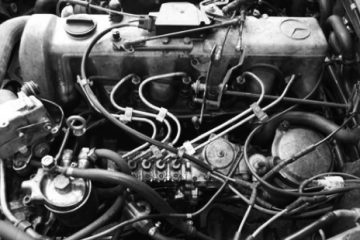The definition of a fuel injector as per different English dictionaries is the following:
A small nozzle is controlled electronically to introduce atomized liquid fuel under pressure, directly into the combustion chambers of an internal-combustion engine.
The Injector was introduced to keep up with emissions and fuel efficiency laws, by reducing fuel consumption, and at the same time, increasing performance and efficiency.
For the injector to achieve such a great increase in performance and improved fuel efficiency, it must perform its function properly, as per the following requirements:
• Fuel must be delivered under extremely high injection pressure
• Fuel must be injected at the correct timing
• The correct amount of fuel must be delivered to meet the power requirements of the engine
• Fuel injectors atomize the fuel into very small fuel particles, ensuring every small droplet of fuel vaporizes and undergoes the combustion process
To ensure that the injector will deliver the above requirements, it has to be produced under the highest level of precision and undergo strict quality control.
The modern fuel injector must be developed as per the following criteria:
• Its materials must be designed to withstand higher stresses for durability during engine operation
• Should be made of greater manufacturing precision and tighter tolerances, to ensure the highest working efficiency and avoids any accidental leakage
• Should enhance the engine in terms of performance, emission, and noise character
Several parameters can undermine the performance and the correct operation of a fuel injector, of which, the most important ones are related to fuel quality (ISO cleanliness level, and water content), and it may lead to the following Failure Chain Reaction:
• Contaminated fuel is sent through fuel injectors
• Fuel injector valve deterioration begins
• Fuel pressure through the injector nozzle reduces
• Fuel volume through the injection system reduces
• Engine ECU increases fuel load to compensate
• Reduced fuel atomization
• Soot generation within the cylinder
• Emissions increased
• Experienced power loss
• A partial injection failure point
• Injector wear continues
• Fuel consumption increases
• Visible and audible signs of engine distress
• Full injection failure
The failure of the fuel injector may lead to further damage and performance loss in the engine:
- Injector failure
- Rough engine performance
- Complications while starting the vehicle
- Fuel odors
- Oil thinning
- Failed emission
- The engine fails to reach the full RPM
- Poor performance of the vehicle
- Smoke emission
- Increased fuel consumption
- Pollution
- Catastrophic engine failure (mostly due to damaged piston crown)
- Piston crown damage
- Fused/melted off material
- Hole in piston
- Cracks in the crown and crown bowl
- Material washout in the ring area
- Radial wear due to fuel flooding
- Axial wear due to ingress of dirt
- Dry running/Fuel damage
In this series, we will talk about different issues related to a defective fuel injector, which are a direct result of bad fuel quality, and how it will impact the performance of the engine.
References:
https://www.collinsdictionary.com/dictionary/english/fuel-injector
https://studentlesson.com/fuel-injection-system-definition-functions-types-working/
https://www.merriam-webster.com/dictionary/fuel%20injector
https://axi-international.com/the-effects-of-diesel-fuel-contamination/
https://www.injectorsdirect.com/why-fuel-injectors-go-bad/#:~:text=Fuel%20injectors%20will%20fail%20when,keep%20your%20fuel%20system%20clean
https://milehighhondaservice.com/fuel-injector-cleaning-service/


0 Comments